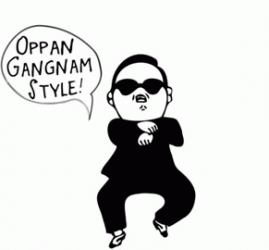What complications would ensue if pop stars were granted exemption from mandatory military service? Should they be exempted? On what grounds?
In order to maintain the national defense army in South Korea, as we know, there is a male conscription since around 70 years ago. Male at ages of 18-35 is expected to serve the military force or other supplemental services mandatorily, from at least 21 months to 55 months. However, there is always people trying to “shirk” from this crucial legal liability, which causes a social criticism that is magnified on the male Korean celebrities. In severe situations that “can easily end even the most prominent celebrity career overnight”, just like Psy did before (Yeo 2017, p.294). Standing in front of mass media and social norms, I personally think that mandatory military service should not be exempted for pop stars.
Nowadays, mass media is a powerful instrument that regulates pop stars’ behaviors. Although, only a few Korean stars were criticized for the mandatory military service in history, people still take it very seriously. In the case of Psy, mass media like newspaper and online articles, was repeatedly using his example to encourage and promote celebrity conscription, which also “function as a watchdog” to “keep the citizenry informed of abuses and misconduct” (Yeo 2017, p.298). Therefore, it would not be hard to image that if one pop star is exempted from mandatory military service for any kind of excuses, would start an enormous debate on mass media and mainly contains criticism.
In addition, social norms would not allow the exemption for pop star, as if equality and democracy is the goal which Korean citizen pursue in their society. The mandatory conscription has been developed into a form of social norms and considered as a “normal” process in a young male adult’s life. The consequences for populations that exposure to inequality, these pop stars could “create a distorted focus for public attention” (Yeo 2017, p.299). In another words, the attitudes of pop stars towards conscription can reflect the social norms that held by themselves, which will be criticized if it against the social values held by the majority who are seeking equality.
In conclusion, I think in order to maintaining the equality between pop stars and rest of Korean citizen, and also to avoid the undutiful behaviour of pop stars exposure to the public through mass media, mandatory military service should not be exempted for pop stars.
Reference
Yeo, Yezi. “The good, the bad, and the forgiven: The media, spectacle of South Korean male celebrities’ compulsory military service.” Media, War & Conflict, 10, no.3, (2017): 293-313.doi: 10.1177/1750635217694122

